Seeks new Military History Professor for Fall Semester
Over the last two weeks, three prospective professors have delivered guest lectures for the History Department, auditioning for a slot the department has open for a military historian. These lectures, known as “job talks,” are a standard part of the academic hiring process and everyone from undergraduates to professors were invited to attend.
The first lecture, on January 22, was delivered by Dr. John McCallum, of the University of Chicago. Titled, “A Moral History of Violence in ‘Unbombed America,’ 1941-1945,” it described how America’s sense of morality coped with the carnage of total war, concentrating on the activities of the wartime press censors, and how wartime necessities interacted with hallowed American freedoms of speech and the press.
McCallum began with a discussion of Michael Walzer’s Just and Unjust Wars: A Moral Argument with Historical Illustrations, a work drawing heavily on Catholic Just War theory written in response to Vietnam, which categorized WWII as a just war and Vietnam as anything but. He then moved on to a discussion of several writers, who, after seeing the battlefields, felt repulsed by civilian America and believed that its removal from suffering had led it to ruinous and immoral foreign adventures.
McCallum disagreed with their views on the state of innocence that the censors supposedly kept civilian America in. Despite having total control over information leaving the frontlines, military censors such as Waldo Drake happily allowed disturbing information to reach the public if they believed that the public were “realistic” enough to handle it. The Battle of Tarawa in 1943 saw American newspapers splattered with pictures of hundreds of dead marines on the beach. Often cited as an example of the censors’ failure, McCallum argued that the censor’s worry was the photos weren’t graphic enough, as they wished to impress upon Americans that the fighting was only going to become worse as the war went on. The only topic completely forbidden to discuss was the execution of prisoners, for fear of provoking reprisals. The censors’ control remained absolute, even shutting down the entire Associated Press after a reporter leaked news of the German surrender early.
He continued on with descriptions of how the Americans on the home front reacted to the press. Eager for news of the war, newspaper subscriptions increased by nine million while magazine circulation doubled. Americans believed themselves fully aware of the horrors of war, although they disagreed whether graphic images were needed or if numbers alone would suffice, and resolute in their desire for victory, with at most 30% of the country desiring a negotiated peace. Dr. McCallum believed that America went into Vietnam because it was desensitized to, rather than ignorant of, the costs of war. My Lai was nothing compared to the firebombing of entire cities.
Continuing the theme of the relationship between mass destruction and public opinion was Dr. Susan Colbourn’s lecture on January 24, “Euromissiles: A Transatlantic History.” Dr. Colbourn described how the 1979 American decision to deploy the Pershing II missile in Western Europe sparked consternation in both the Soviet Union and NATO. Dr. Colbourn, of Yale University, specializes in the development of nuclear weapons and their effects on conflict. Her research on the Euromissile crisis drew upon everything from pop songs such as “99 Red Balloons” to NATO memos, and took her to eight countries. One of her findings was that contrary to accusations of being Soviet stooges, most Euromissile opponents were fiercely independent. Even uniformed West German soldiers joined the crowds denouncing the idea that “Pershing macht frei.”
The Pershing II missile was seen as an attempt to create a “first-strike” capacity to eliminate the Soviet Union before it could launch its own missiles, leading the Soviets to launch their invasion of Afghanistan and massive anti-nuclear protests to break out in the NATO nations. Many viewed President Reagan as intent on the destruction of the USSR, and believed the Pershing would bring nuclear armageddon to Europe. The “dual-track” strategy of deploying the Pershing II while simultaneously negotiating with the Soviets for its elimination was seen as hypocritical.
Despite their protests, the Pershing II was eventually deployed in 1983, in what Dr. Colbourn described as the hardest test of NATO’s reliability and will to resist the Soviets while maintaining its democratic ideals. Ultimately, nuclear war was averted and the Pershing II and its Soviet counterpart, the SS-20, were banned in the Intermediate-Range Nuclear Forces treaty of 1987.
The final lecture was delivered Monday, January 28, 2019 by Dr. Ian Johnson, a postdoctoral fellow at Yale University. Entitled, “The Faustian Pact: Secret Soviet-German Military Cooperation in the Interwar Period,” it described how interwar joint military research and training was essential in creating the conditions for the Second World War. No sooner had the ink dried on the Treaty of Versailles than the German military began planning to rebuild its strength and retake its lost territories from France and Poland. However, the treaty had greatly limited the size of its military and banned it from possessing modern weapons such as tanks and aircraft. To maintain its technological edge, the German military turned to an unlikely ally, fellow pariah state the USSR.
Keeping their plans secret from their own government, the German military set up a series of factories and research bases in the Soviet Union. Soldiers and scientists would resign their posts in Germany and travel to the Soviet Union as tourists, to research banned technologies in secret. In exchange for their help keeping the Germans’ preparations for a new war secret, the Soviets would receive valuable factories and technological research. German and Soviet troops even trained together at the Lipetsk air base and the Kama tank school.
Dr. Johnson believes that without this cooperation, the German military would not have been able to carry out Hitler’s plans, as they would have been technologically behind the Allied powers. He argues that the critical moment for stopping the Second World War was not at 1938 in Munich, but a decade earlier when Britain refused France’s request to sanction Germany for its remilitarization.
After Hitler came to power, there was no need to continue developing weapons in secret, and the bases in Soviet Russia were closed. On the Russian side, participating in the joint military efforts was used as a sign of disloyalty, resulting in many losing their lives in the purges. The German military walked away with a respect for the power of totalitarianism and a hatred for Stalin’s government. The stage had been set for the Second World War.
The “job talks” were well-received, sparking engagement and discussion among faculty and students. The history department hopes to fill the position in time for the selected candidate to begin teaching in the fall of 2019.
David is a junior studying history, with minors in Computing & Digital Technologies and Business Economics. All of his spare time goes towards playing the trumpet in marching band. You can reach him at dmoses2@nd.edu.
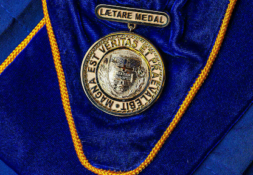
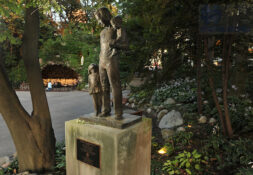
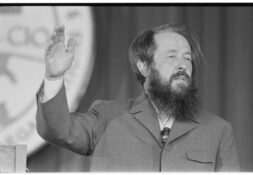
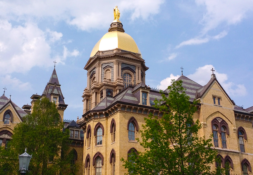
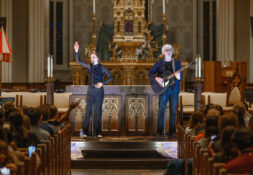

Leave a Reply